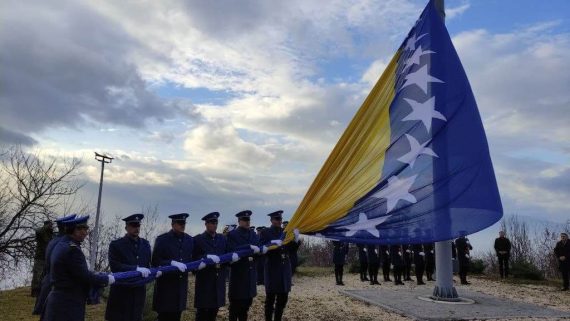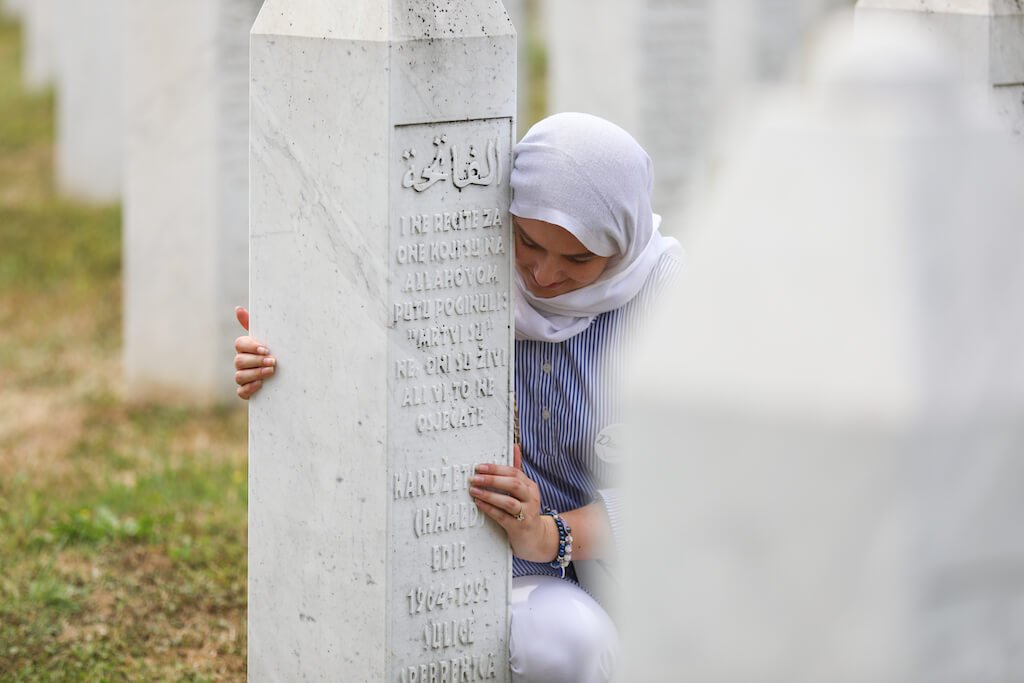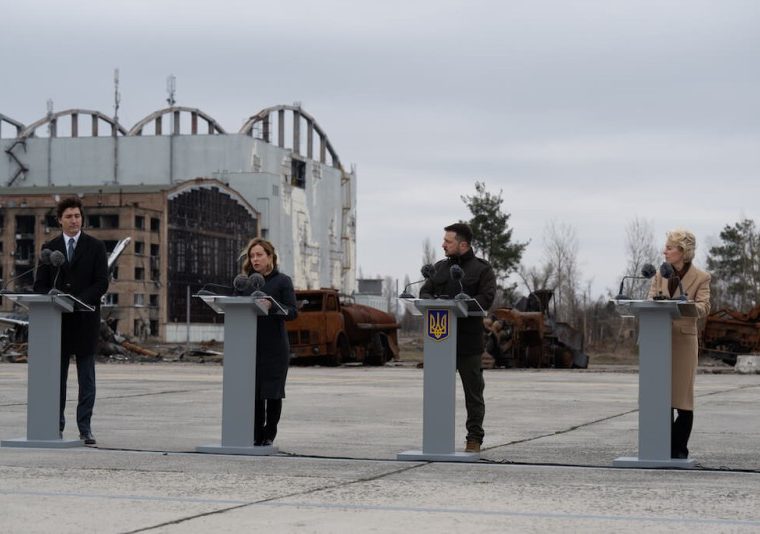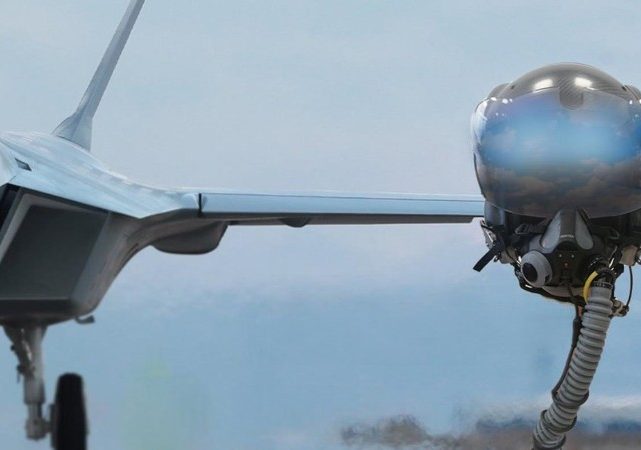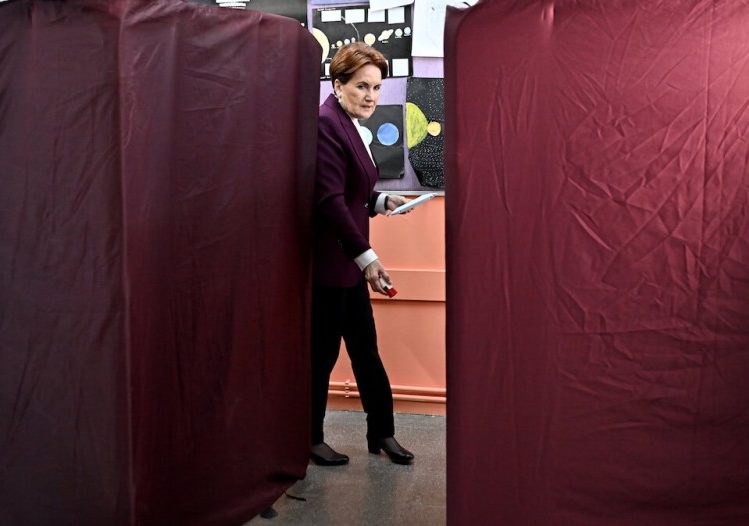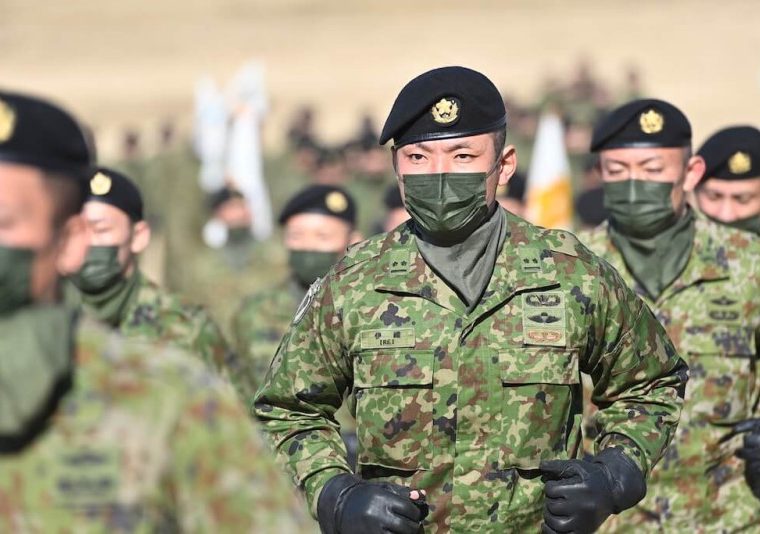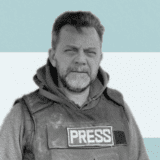I first entered Sarajevo after a long drive through the thick misty woods of Western Bosnia at the beginning of 1996, almost two weeks after the Dayton Peace Agreement (DPA) was signed which was supposed to end the 3.5-year-long war through reconstruction and reconciliation.
I faced grave contradictions on the road from the Croatian city of Split to Sarajevo after waiting for three days to catch a UN aid convoy that would take me to the war-torn capital. The winding road passes through misty mountains and thick woods setting one’s mind at ease with beautiful tall trees and greenery.
But once we pulled over for a short break, I witnessed one of the most shocking experiences in my professional life when we had to walk on a carpet of AK-47 shell casings scattered throughout the forest. I could barely find a scrap of earth to step on that was not covered in shell casings. All I could hear was their creaky sound as the smell of gun smoke still hung in the air.
At that moment, I had a clear understanding that one of the worst episodes of mass murder in Europe had taken place in Bosnia, which witnessed the worst human rights abuses and atrocities, betrayal, and genocide during the war in 1992-1995 as part of the break of Yugoslavia.
The scene in Sarajevo was even worse as the city was completely besieged by the Serb troops for more than three years and was the theater of a killing field for Serbian snipers who shot everything that moved including the elderly, women, and children. A thousand six hundred children were killed by Serb sniper fire in the city during the war. The headquarters of the famous daily Oslobodenje was almost in ruins as it was targeted from the beginning of the war by Serb troops led by Ratko Mladić, known as the “butcher of Bosnia.” Mladić was later found guilty of orchestrating genocide in Srebrenica, crimes against humanity, and war crimes by the UN International Criminal Tribunal for the former Yugoslavia (ICTY).
At the beginning of 1996, Bosnians with broken dreams seemed ready for reconciliation and to rebuild their lives, thinking that the DPA would pave the way for such a process. Esad Mavrić, who was my fixer in Sarajevo, didn’t seem that optimistic as I delivered him some basic foodstuff like milk powder, sugar, rice, and some fresh fruits which were really hard to find for civilians. The siege by Serb forces had made it hard to cover basic daily needs and for parents to feed their children. “Having a peace agreement is better than having a war. But I’m not sure how long it will last,” he said.
Shortly afterward, we found out that his name was on the Serbian “most wanted” list, pushing us to cancel our planned trip to Srebrenica as the road to the city was filled with Serbian checkpoints. Srebrenica was handed over to the Serbian army about six months earlier on July 11, 1995. The city was supposed to be protected by Dutch soldiers mandated to protect civilians as United Nations peacekeeping forces handed it over to the Serbs. At least 8,500 Bosnian boys and men were killed, and more than 20,000 civilians were expelled by the Bosnian Serb forces from the area – a process that was later declared a genocide by the ICTY.
The Srebrenica genocide compelled the West to press for a ceasefire which paved the way for the signing of the DPA.
DPA: A Dictated and Interventionist Agreement
Since the DPA was signed, Bosnia-Herzegovina has directed its attention to the reestablishment of regional cooperation with former Yugoslavian republics with an aim of securing national security and sovereignty.
The Dayton Accords were signed on November 21, 1995, under the supervision of the U.S. in Dayton, Ohio and the signatories were President of Bosnia Herzegovina Alija Izetbegović, President of Croatia Franjo Tuđman, and President of the Republic of Serbia Slobodan Milošević. The DPA was finally re-affirmed by all sides in Paris on December 14, 1995.
The DPA was an interventionist peace agreement that primarily aimed at ending the war. The main objective of the Dayton negotiations were conflict resolution and the preservation of an independent and functional state of Bosnia-Herzegovina. It dictated peaceful conflict resolution, protection of human and minority rights, equality, political representation, good governance, and rule of law.
According to the DPA, Bosnia-Herzegovina was divided into two entities. The Serb-dominated entity Republika Srpska with control of 49% of the territory and the Croat-Bosniak-dominated entity, Federation of Bosnia-Herzegovina, with control of 51% of the territory. Both entities were controlled by a weak central government.
According to many, including former president of Bosnia-Herzegovina Alija Izetbegović, the basis of the treaty didn’t constitute a just peace. “The peace is more just than continuing the war and a better peace couldn’t be obtained,” he said.
Indeed, the DPA was designed to create new multi-ethnic and democratic institutions in a war-torn society in order to ensure respect for fundamental human rights and freedoms, and the rule of law; to provide for post-conflict reconstruction towards sustainable peace for Bosnia-Herzegovina; and to prevent the recurrence of the conflict or its potential spillover in the region.
The DPA introduced an entirely different form of governance. According to this, Bosnia-Herzegovina is a semi-presidential republic with three representative presidents that are directly elected and who exercise their jurisdiction on the entire territory of Bosnia-Herzegovina. According to the state structure and organization, Bosnia-Herzegovina is a complex state that consists of two entities and the Brcko District.
In terms of the political system, Bosnia-Herzegovina is a democratic state with the division of legislative, executive, and judiciary powers; rule of law; pluralism of political parties; general, direct, and secret voting; an independent media and judiciary; and respect for human rights. With regards to the relationship between central and local authorities, Bosnia-Herzegovina is a highly decentralized state with two highly centralized entities.
The Dayton Peace Agreement
The DPA may have stopped the war but, on the other hand, it also created a complex form of governance which might have complicated things even further leading to a new conflict – one that the world is facing now.
There was considerable debate and criticism of the DPA from the very start, in terms of structure, balance, and efficiency. Many argue that the DPA brought about unequal agreement among warring ethnic groups. The Bosnian Serbs who committed ethnic cleansing and genocide were rewarded with the ethnically cleansed “republic” while the Bosnians and Croats had to share a “federation.”
Therefore, the Serbs gained autonomous status, where the control belongs to them, whereas the Bosnians are politically and militarily checked by the Croats. Then, there has been poor implementation of the DPA in terms of freedom of movement, return of refugees, giving back the prewar voting rights of the people, and prosecution of war criminals. In fact, some argue that the DPA affected the partition of Bosnia-Herzegovina into ethno-nationalist entities that acknowledged and effectively rewarded the ethnic cleansing process.
Recommended
Although the DPA has partially facilitated the creation of a sustainable state, the major ethnic groups that were involved in the conflict remained unwilling to form a functional state in the name of Bosnia-Herzegovina, especially the Serbs with their “Greater Serbia” motto always present in their hearts and minds.
Since 1995, national political parties have been using fear, ethnic enmity, and exclusive nationalism in their electoral campaigns. Thus, the democratization process in post-Dayton Bosnia-Herzegovina has been carried out by the nationalist parties locked in their ethnically separated constituencies which often obstructed the return of refugees and displaced persons.
Is the Dayton Peace Agreement Fractured?
In 2000, five years after the DPA was signed, the European Union, sidelining the U.S., became the leading international body to support the stabilization and association processes in Bosnia-Herzegovina. This seemed a turning point at the time since it raised hopes in Bosnia-Herzegovina for a full EU and NATO membership. But the need to reform military forces, the establishment of a defense ministry at state level, the introduction of a VAT taxation system, the restructuring of the judiciary and prosecution, and the establishment of courts were all blocked by ethnic aspirations from all sides.
In 2005-2006, attempts at constitutional and state structure reform proposed significant changes with regard to the power of the Council of Ministers and the Parliament Assembly of Bosnia-Herzegovina. However, these and similar attempts at constitutional reforms were all seen through the prism of the country’s territorial reorganization rather than attempts for the creation of a functional state that is ready for EU and NATO membership. As a result, they were all rejected.

VIDEO: How Political Borders Are Redrawn in the Balkans, Caucasus and the Middle East
Today, Bosnia-Herzegovina is still a largely dysfunctional and inefficient state, which is not able to fulfill the requirements set by the European Union and NATO.
This has continued to fuel the nationalist aspirations of Bosnian Serb politicians like Milorad Dodik, the leading Bosnian Serb separatist politician and nominal member of the Presidency of Bosnia-Herzegovina.
Peace Is Precariously Poised by Bosnian Serbs
Serving as the seventh and current Serb member of the Presidency of Bosnia-Herzegovina, Milorad Dodik is also the president of the political party Alliance of Independent Social Democrats (SNSD).
Today, Bosnia-Herzegovina is still a largely dysfunctional and inefficient state, which is not able to fulfill the requirements set by the European Union and NATO.
Initially, in the 1990s and early 2000s, Dodik was considered a moderate and reformist alternative to the ultra-nationalist Serb Democratic Party. However, since then, Dodik and the SNSD have started pursuing an increasingly nationalist and separatist line, invoking the right of the Bosnian Serbs to self-determination. His time in power has been characterized by authoritarianism, repudiation of federal Bosnian institutions, and closer connections to Serbia and Russia.
Dodik’s SNSD has recently passed a number of documents that open the way for the Bosnian Serb parliament to pass a series of laws establishing parallel institutions. His plans include establishing a Serb-run intelligence service, a taxation authority, an armed force, and to remove the Bosnian Intelligence Service and the Armed Forces of Bosnia-Herzegovina from the Serb-majority areas of Republika Srpska.
Especially his intention to re-establish a Bosnian Serb military, officially named “Vojska Republike Srpske” during the Bosnian war, looks like a thick red line. Dr. Emir Suljagić, the director of the Srebrenica Memorial Center and a part-time lecturer at the International Relations Department of the International University of Sarajevo, points out that the Bosnian Serb army was found responsible for genocide by the International Court of Justice in 2007.
The Bosnian Serb Army besieged the capital city of Sarajevo for 3.5 years, resulting in crimes against humanity. It also organized detention and concentration camps in 1992 and was at the heart of the genocidal violence that targeted the Bosnians and Croats of Bosnia-Herzegovina. It was also at the heart of the genocidal operation in Srebrenica in July 1995. The top echelon of the organization was directly involved in the planning and execution of the mass murder of the male population of the former UN Safe Area.
Suljagić argues that Vojska Republike Srpske, along with Republika Srpska, was saved only by a lie that Richard Holbrooke, the chief U.S. negotiator for the Balkans and Assistant Secretary of State for European and Canadian Affairs fed Bosnian President Alija Izetbegović that then-U.S. president Bill Clinton had told him, namely that NATO would bomb the Bosnian army if it tried to take Banja Luka, the rebel capital.
A Threat to West and NATO
Bosnian politicians believe that if a separate Bosnian Serb military is reconstituted, the entire region will become more unstable since in the past the now defunct Bosnian Serb military continually undermined the peace process, aided in hiding indicted Serbian war criminals, intimidated non-Serb returnees to Serb-majority areas, and even spied on NATO troops stationed in the country.
Bosnian politicians believe that if a separate Bosnian Serb military is reconstituted, the entire region will become more unstable.
If Dodik succeeds in forming a separate armed force for the Bosnian Serbs, as he plans, the region will become an anti-NATO area – of course with the help of Russia – that will share a border of hundreds of kilometers with Croatia, the neighboring NATO member.
Looking back at what happened in Srebrenica, Sarajevo, Tuzla, and other majority Bosniak cities during the war, the formation of a separate Serb armed force will primarily target the existence of the Bosniaks. It was the same Bosnian Serb Assembly that adopted directives in November 1992 which set the basis of the Srebrenica genocide, and treated the entire Bosniak population as their default enemy.
After 26 years, NATO and the EU should learn from their mistakes in the Bosnian war when they did not act quickly and decisively to protect the lives of Bosniaks. This time they need to work together and take action to protect years of progress.
Armika Helić, a member of the House of Lords in Britain and a special advisor to UK Foreign Secretary William Hague from 2010 to 2014, has stated that “if the Bosnian Serbs and the help they get from Russia is not contained, there is no doubt the conflict in Bosnia and Herzegovina is no longer unthinkable.”
The West should not leave Bosnia and Herzegovina on its own, and should act quickly and decisively. Russia knows this and is deliberately testing NATO’s resolve and capabilities. If NATO and the EU do not stand up for stability in the Balkans, starting from Bosnia-Herzegovina, there is little room for them doing so anywhere else in the world. In the absence of strong Euro-Atlantic engagement, it is not just the Balkans that will suffer.
